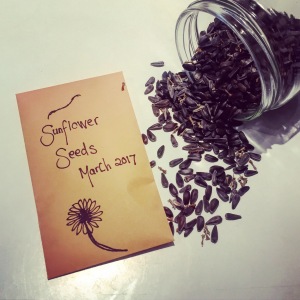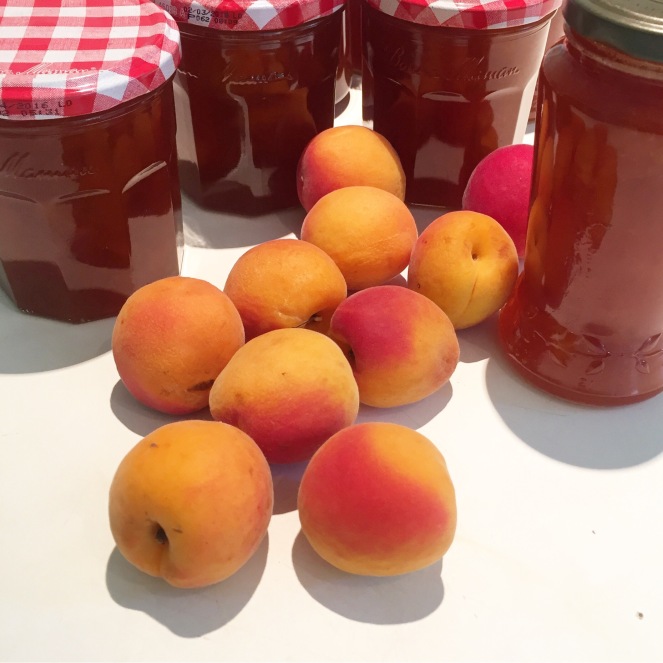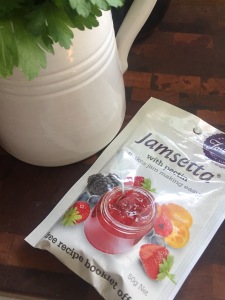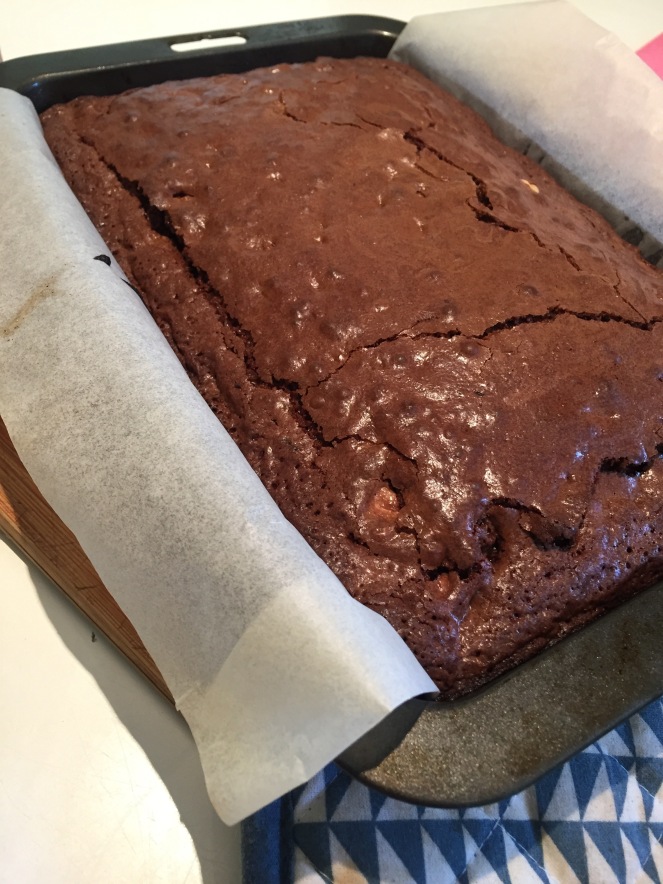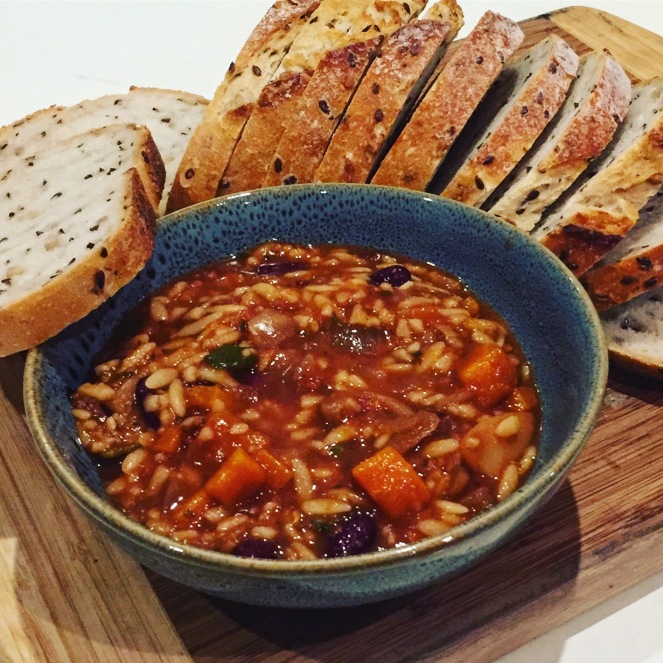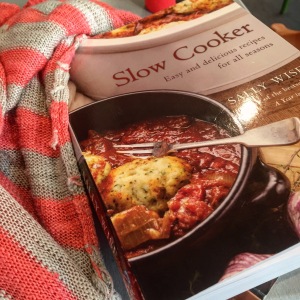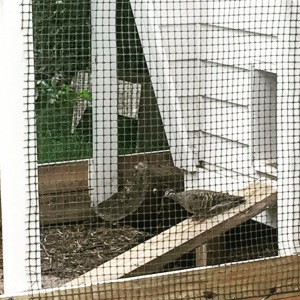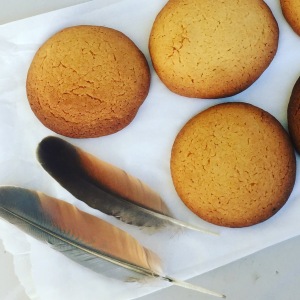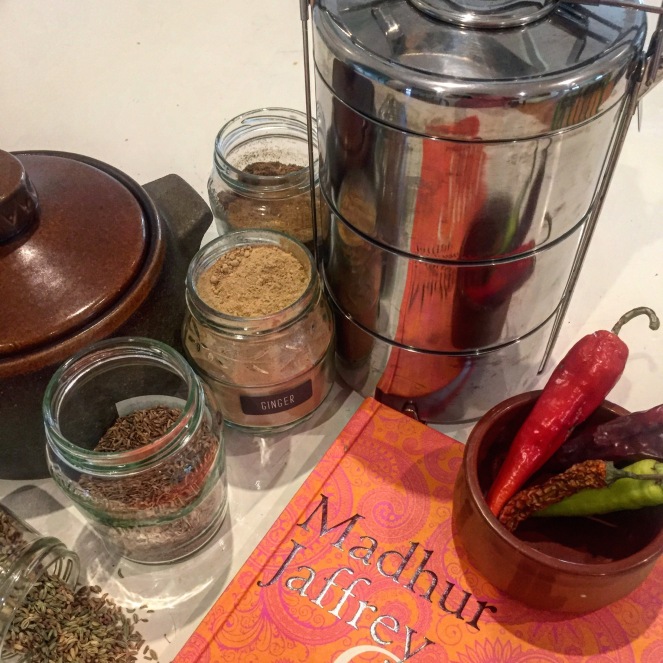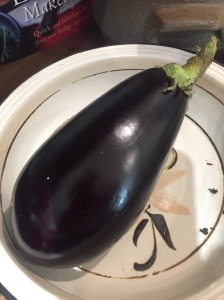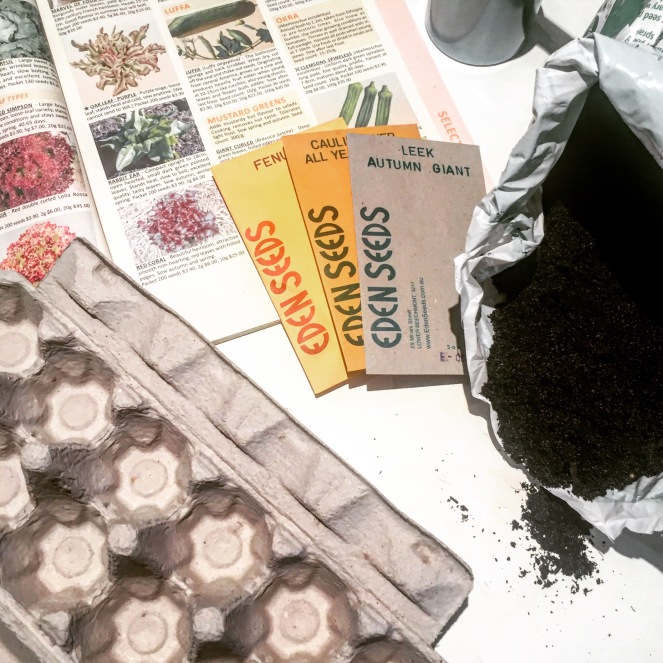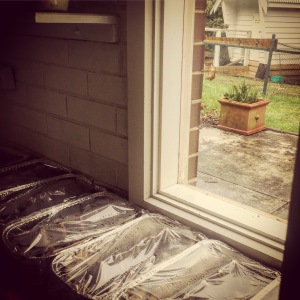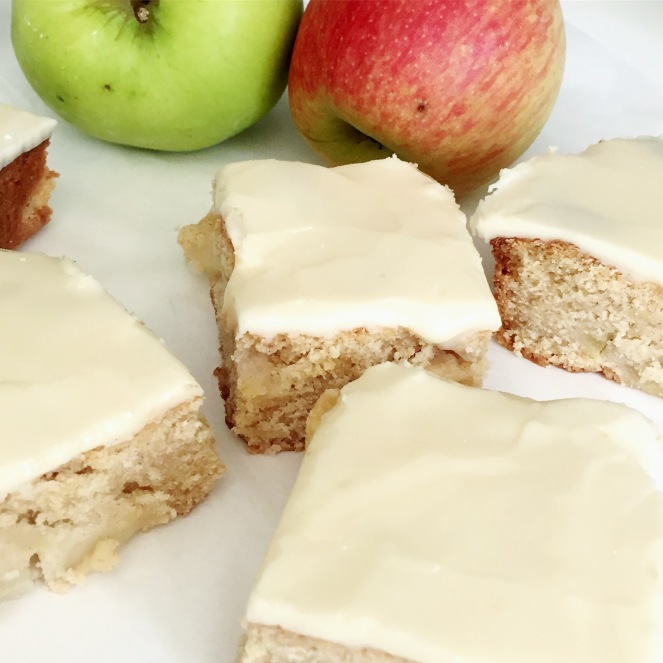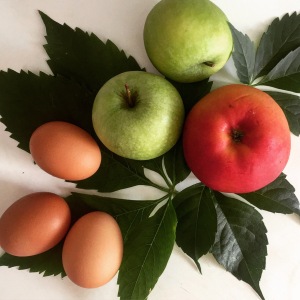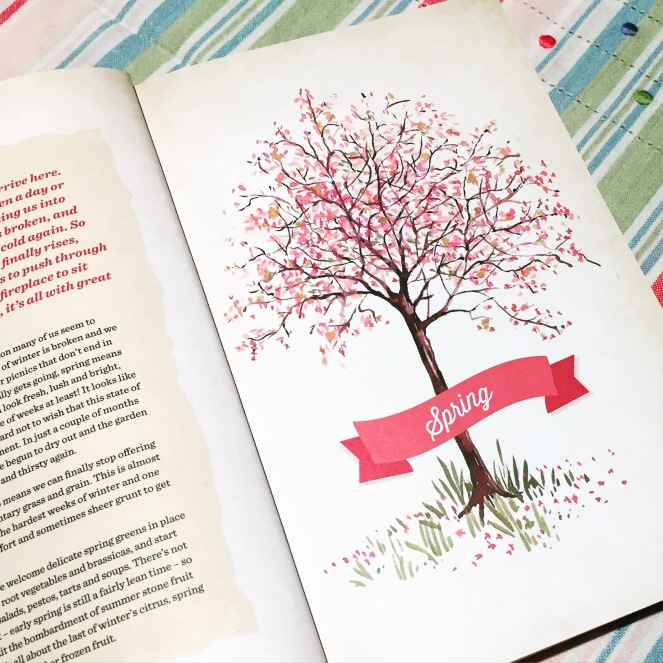
It is with barely contained glee that I can announce, we saw the trailer for Spring 2015 here today!
Yes, all of the highlights – bird twittering, daffodil nodding, lawn mowing, cat sprawling and of course sun drenching – were condensed into the happy daylight hours of this late winter Saturday. And if the coming season is anything close to what this trailer alluded to, it’s going to be a cracker! So, inspired by this exciting preview, I thought it fitting that the opening image to this post about Sophie Hansen be the spring illustration from her book, Local is Lovely.
But before I continue, I just need to take a quick side-step up to a soap box, and restate my passionate belief yet again – we all need to continue to cook. We need to take produce from around us, where possible, in it’s simplest form and slice it, mix it, bake it, steam it, roast it, mash it or whatever needs to be done to it to produce nourishing, appealing food to fuel healthy lives. And most vitally, our children need to see this happening. They need to be exposed to basic raw materials being crafted into meals so that when their time comes to take responsibility for their own nutrition and/or the nurture of others, this will be their default. Because it’s what they saw.
They need not have seen elaborate haute cuisine, but simply, basic combinations of fruit, vegetables, proteins and grains with a measure of fats and oils keeping things balanced and delicious. If that means thick slabs of bread loaded with generous slices of tomato, fresh cheese and garden herbs, topped with some pan-crisped salami, then the job is done. And if it can’t happen this way each day because the pace of life takes precedence, then that’s ok – just so long as there are times when it does.
So this now brings me to Sophie, a food writer and one-woman cheersquad for the local farmers/producers in her neighbourhood, within which, her farm in Orange, four hours west of Sydney is located. She is a strong advocate for sourcing food locally not only for the deliciousness of it but also to support the local growers, whom she believes are the heroes of our land. In her beautifully laid out read, you will be taken through the seasons, inspired by earthy delicious cooking using seasonal produce and intrigued by a sprinkling of profiles of her local farmers.
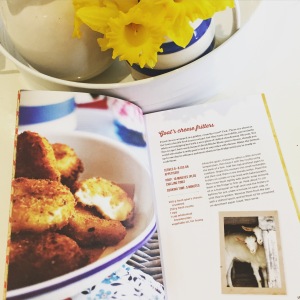
As well a being just a pleasurable, inspiring read, Sophie’s message within these pages is clear, to source locally, cook seasonally and enjoy the process.
Now I realise that most of us may not be located bang smack in the centre of a regional food bowl, and the local supermarket may be as close as it gets to sourcing our produce, and that’s fine too. It is amazing though, if you attempt to sniff it out, there are sources of locally grown staples, even in inner urban areas that can be drawn upon. I have a free-range egg farm close by and I imagine that many of you have a monthly farmer’s market in your vicinity. Some of us have neighbours with fruit trees whilst others are making it their business to learn the art of foraging and finding wild delights ripe for the taking. My point is, use what is available to you when you can and become aware. It’s not about making sweeping overnight changes, but gradual shifts toward a healthier and therefore more enriched lifetime.
So while you ponder this, here is a Chocolate Blackberry Loaf, one of Sophie’s Winter Baking recipes (that you can receive in a free ebook that can be downloaded when you visit her and sign up for her newsletter) to enjoy.
1 cup plain flour
5 tbsp cocoa powder
1 tsp baking powder
1/2 tsp bicarb soda
good pinch salt
1/4 cup espresso coffee (I used one shot from our little machine at home but you could also make a really strong plunger coffee and use 1/4 cup of that)
1/2 cup natural yogurt
1 tsp vanilla paste
150g unsalted butter, softened
1 cup caster sugar
3 eggs
1 cup blackberries (raspberries or blueberries would also be good)
Preheat oven to 180C and grease and line a large loaf tin. Sift together the flour, cocoa powder, baking powder, bicarb and a good pinch of salt and set aside. In another bowl, combine the coffee, yogurt and vanilla and stir well. Now cream the butter and sugar together in an electric mixer, until pale and fluffy.
Add the eggs, one at a time, beating well between each addition. Add the yogurt mixture and mix in on low speed. Then, by hand, fold in the flour mixture and finally fold through the blackberries.
Spoon batter into the tin and bake for 45 minutes or until the cake is just pulling away from the tin’s sides and it feels firm to touch
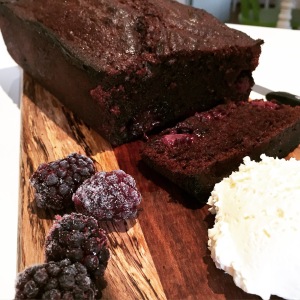
Postscript: and apart from the ethical, nutritional, sustainable and economic values Local is Lovely expounds, anyone who creates a cake recipe combining chocolate, coffee, blackberries and greek yogurt ought to be worth paying attention to.

